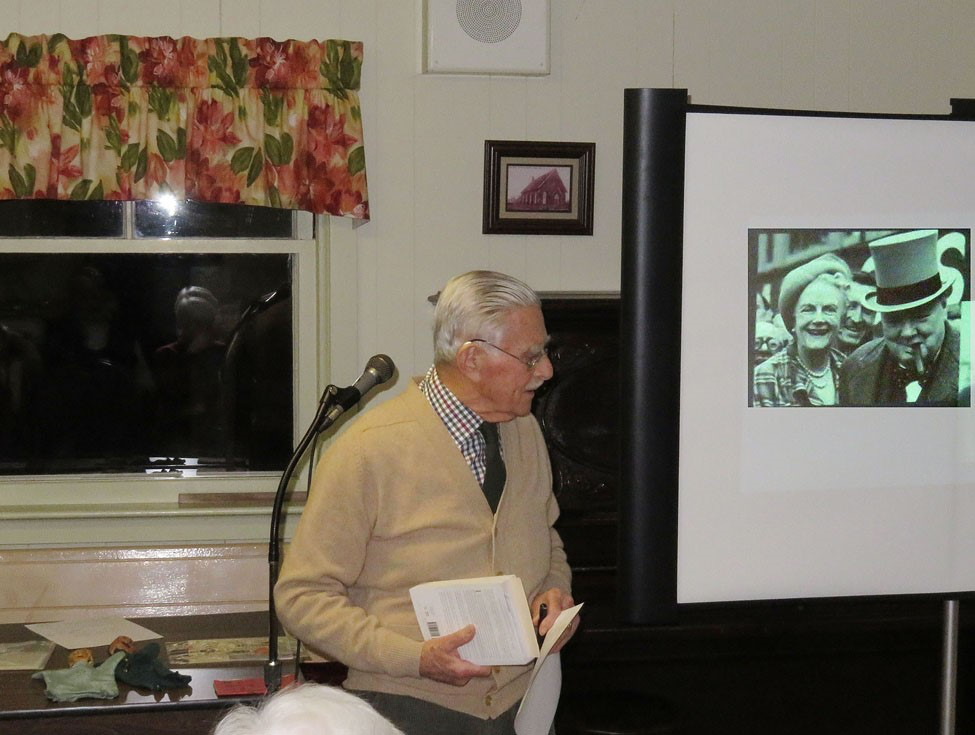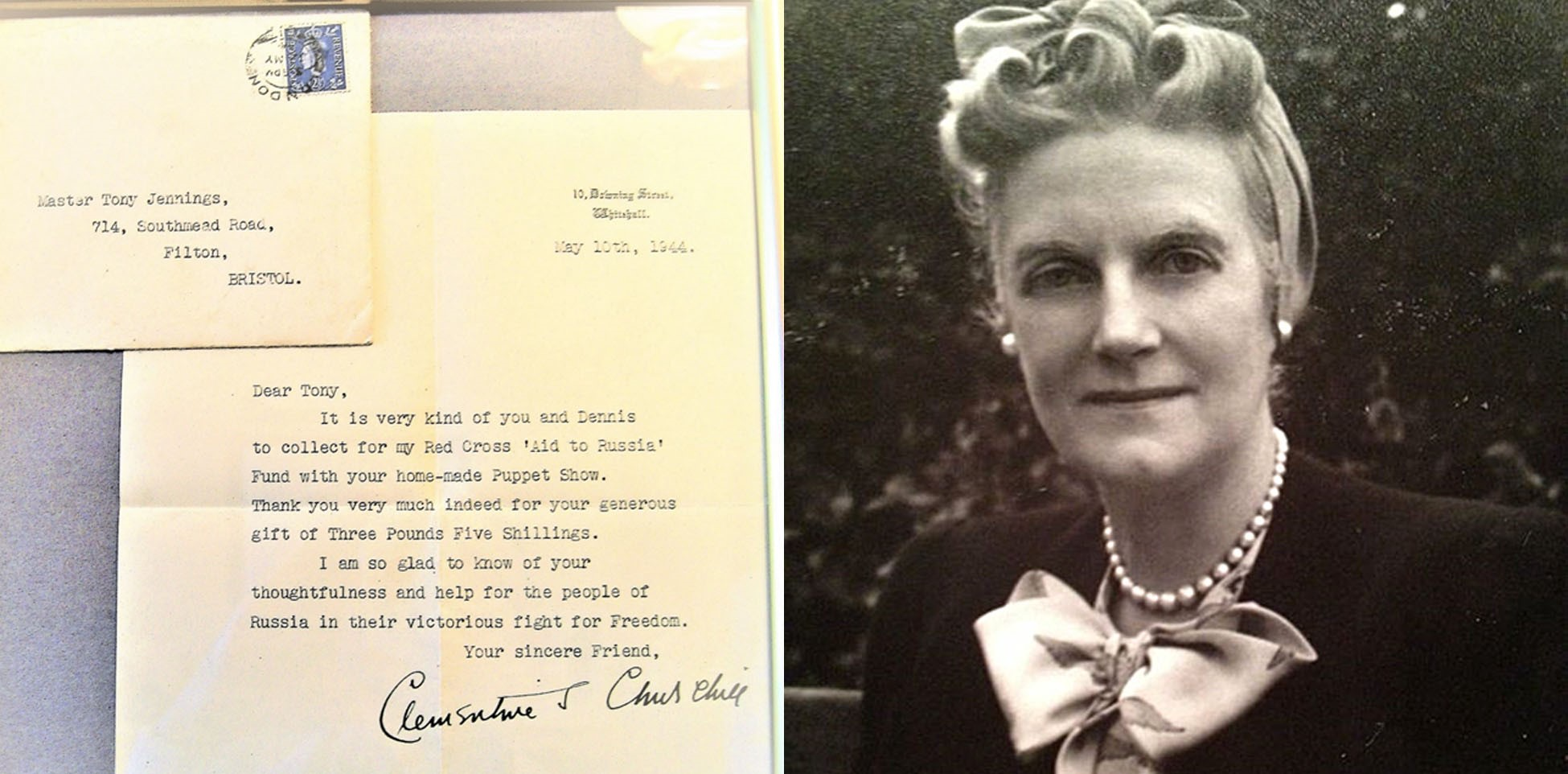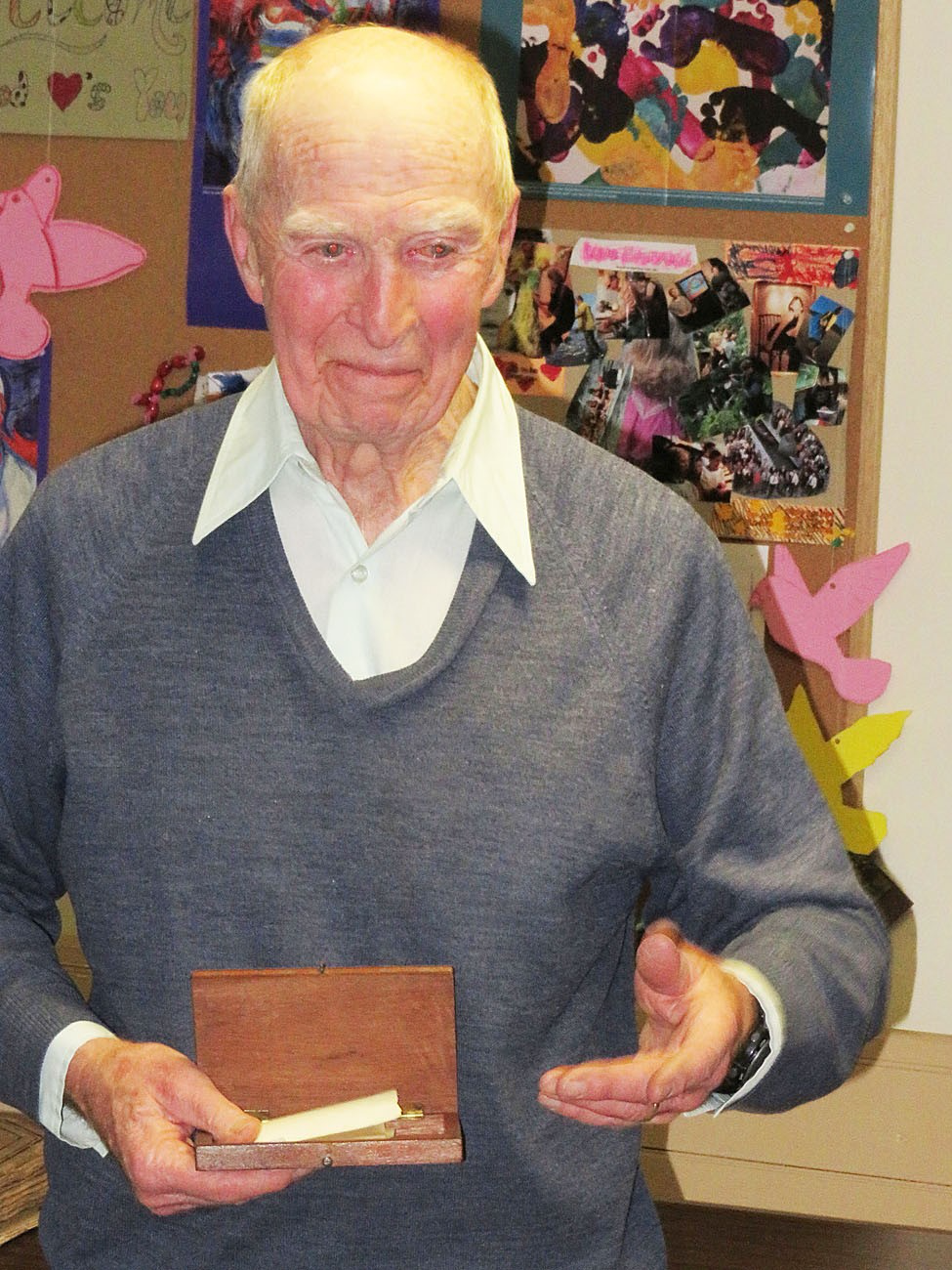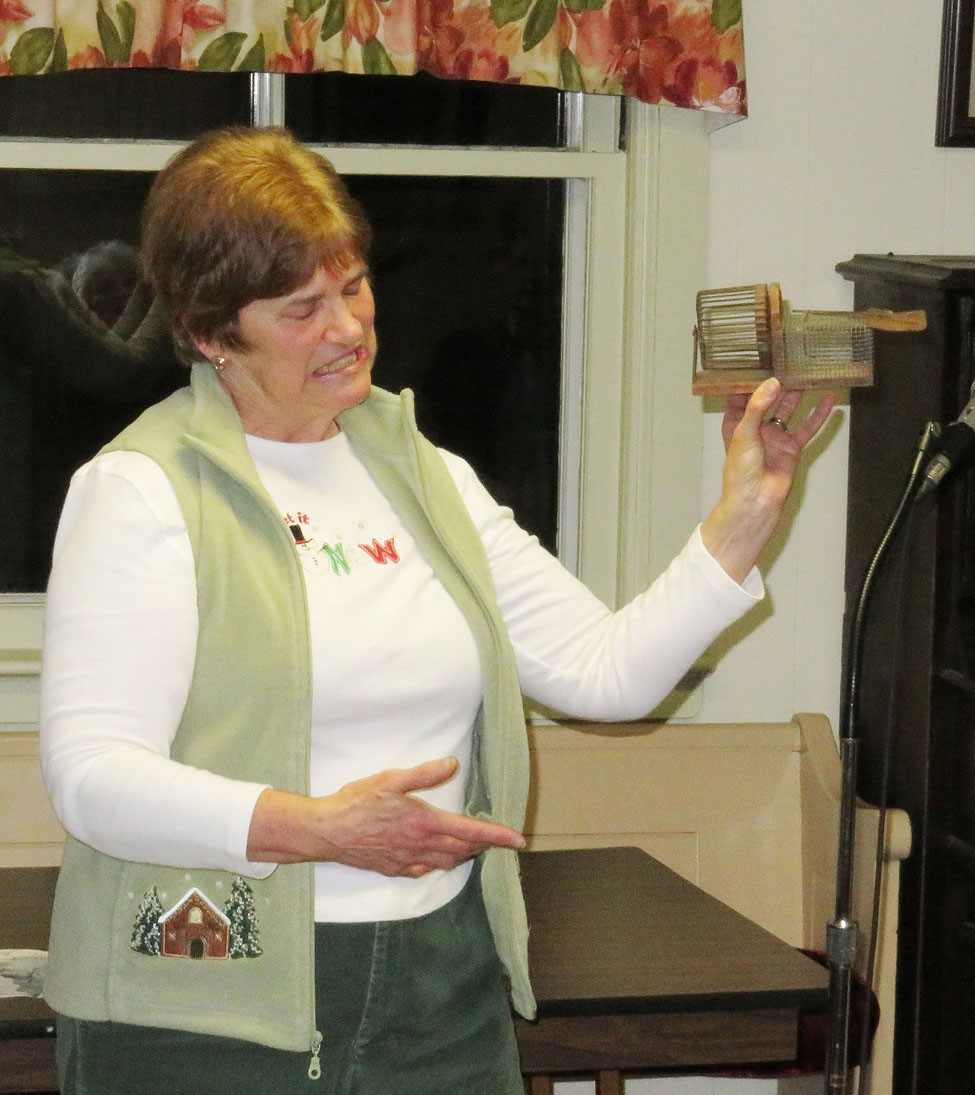Annual Bring & Brag
Annual Bring & Brag
Article by Susan McKellar. Photos by Owen Cooke. January, 2017.
Once again, RTHS members entertained and dazzled us with wonders and stories! We had a total of 11 talks. And Ron Wilson served as our A/V technician, providing the equipment and wherewithal for slide presentations that accompanied some items.
Dennis Osmond took us back to World War II times in England, and the Red Cross Aid to Russia Fund. This was a fund-raising drive, led by Clementine Churchill, wife of the prime minister, to provide food, hospital/medical supplies, etc., to those in need in Russia following the German invasion. He displayed a couple of “love puppets” that he and a childhood friend made and used in a Christmas pantomime, as well as a notebook with the scripts of the plays which incorporated local experiences with buzz bombs, etc. They did shows at events such as birthday parties and charged admission. He also showed us pictures of Mrs. Churchill, posters, the puppet theatre, and a personalized letter of thanks signed by Mrs. Churchill. Dennis and his friend Tony raised a total of three pounds 5 shillings that they contributed to the cause.
Jan Willis brought an item from the many boxes of material from her mother’s house. This was a book belonging to her Aunt Minnie (1905-1974), a teacher living in Roxborough in Montreal who Jan was close to, after many visits that included French lessons. The large book was originally a business ledger from the 1890s that Minnie used as a base for a scrapbook. She inserted many clippings and handwritten entries on a variety of subjects ranging from a floral tribute to Sir Wilfrid Laurier, to God, to poetry.
Owen Cooke presented an interesting slide show entitled “A Dutch Coin and Dejima”, and passed around the coin in question which had a coat of arms on one side and VOC 1790 on the other. The coin was from the United East India Company, a Dutch company chartered in 1602 that was the first company to trade shares publicly. Dejima is an artificial island built in 1634 in the bay of Nagasaki, Japan, in order to accommodate Portuguese Christian missionaries and prevent the spread of their religion. This was the only place where foreign trade was permitted from the 16th to the 19th centuries, and it had a history of 400 years of Dutch trading. They brought in many items including coffee, chocolate, clover, pianos, etc., and traded them for copper, silver, rice, porcelain, lacquerware, etc. Dejima is now a museum with costumed guides who offer tours in English, Japanese, Dutch and French.
Brian Sawyer displayed four different objects. The first two belonged to his aunt who was an artist.Before WWI her job was adding colour to black and white photographs. She also had a business painting and selling miniatures that were painted on ivory. Brian passed around one of these miniatures as well as a box containing small thin pieces of ivory that looked like paper. His third object was a decorative plate, one of a series of seven with characters from Dickens painted on them; this was “Fat Boy”. His final item was a silver-handled cane that Brian Earl had borrowed after a leg injury.
Val Lister, long-time collector of lamps, did not disappoint! She showed us the first reference book on lighting that got her started on lamp collecting, as well as another excellent book. She then moved on to showing us various intricate lighting devices. One was used by dentists to tilt a light, another by barbers for singeing a beard. There were taper jacks, used for sealing envelopes. And cigar lighters, whereby a man would light a “spill” from the candle and bring it to the cigar to light it. There was a jeweller’s torch which was used for silver solder, for repairs to fine jewellery.
Eleanor Aass brought a complicated antique tool from her late husband’s family in Norway. The Norwegians liked to drink coffee through a piece of sugar, but they didn’t have sugar cubes long ago, so they processed the sugar so it was solid, then used this tool to cut it into pieces.
Jane Anderson showed us a lovely sign that she and Ed have at their home in Riverside South. It says “Shawbridge Cottage”. She gave us a bit of family background – her maternal great-grandfather, Robert Fulton, immigrated to Canada from Scotland. His daughter, Jane Agnes, married Osborne Shaw of Shawbridge, Quebec. Osborne’s mother, Jane, was widowed and built a house there, both as a home and as a business opportunity to accommodate the railway construction workers. Osborne bought the house and brought his bride, Jane Agnes, to live there. She later received a Scottish inheritance from her maiden aunties and used this to improve the house, putting in plumbing, etc., and gave it the name at that time.
Ruth Wright asked us to guess what her item was, that a neighbor had given to them. I think someone correctly guessed – a mouse-trap! It was an intriguing object that included an enclosure and an attached treadmill. It is a humane trap in that the mouse is not killed, merely captured. But then somehow it has to be released. Ruth has not had the need to use it yet!
Sandy McNiece demonstrated a couple of musical gongs that came from his wife’s relatives in Wales, and that he has in their home now. We were also asked to guess what they were, as it was not obvious. They appeared to be made of brass, and gave a lovely ring when struck or tapped. One was a large tube, and was made of a gun canister for ammunition. The other consisted of four flat round plates, hung in a wooden frame. They were tops from gun canisters, and each gave a different note.
Susan McKellar has been listening to oral histories of elderly local residents who were interviewed in the 1970s by Georgie Tupper and team. She played a few excerpts from Wilbert Beggs (skating on the creek), Wellington Craig (travelling out west to the grain harvest in 1911) and Hugh L. Craig (never had a car, had a wonderful life). Brian Wright provided some additional details on these gentlemen.
John Palmer finished off the evening with an old French magazine he happened to come across in a bookstore in Chartres, France. It had an article on the landing at Dieppe in 1942, with lots of photos and details. He noted that certain words in the text were blacked out by censors.




